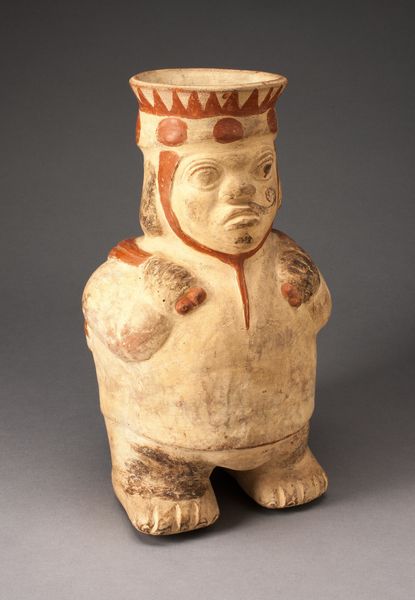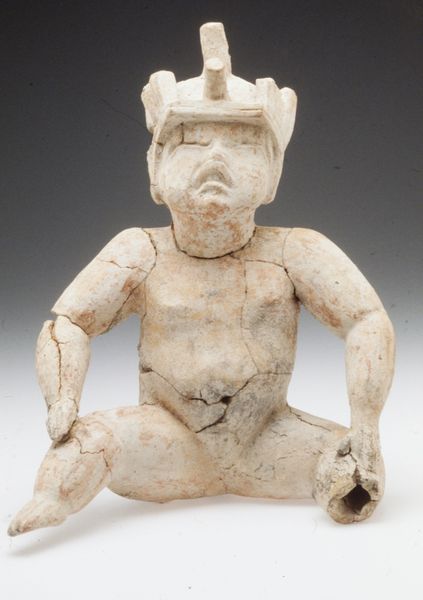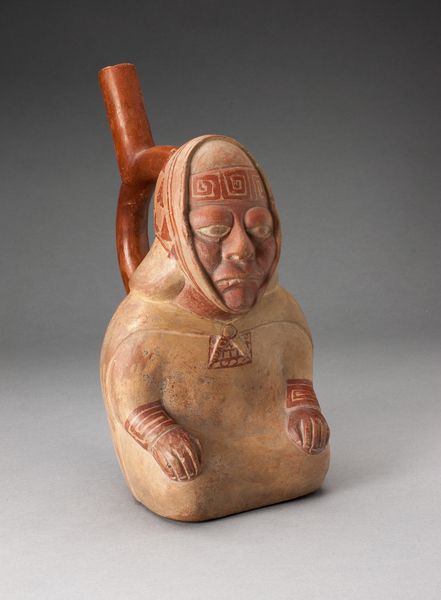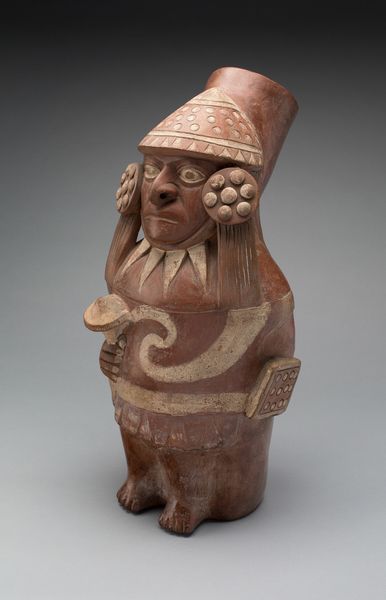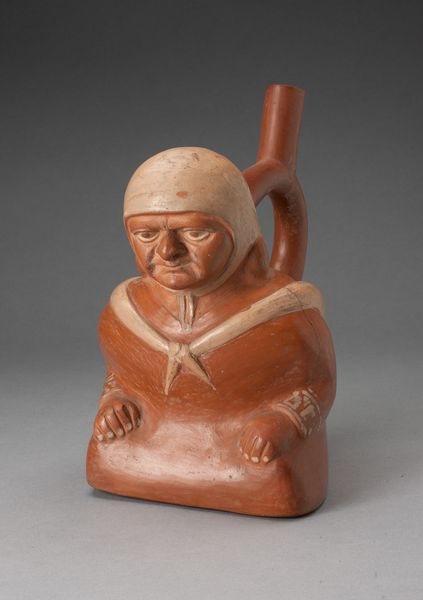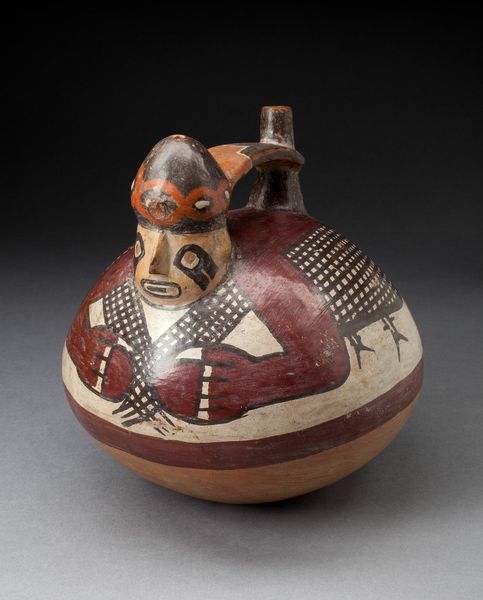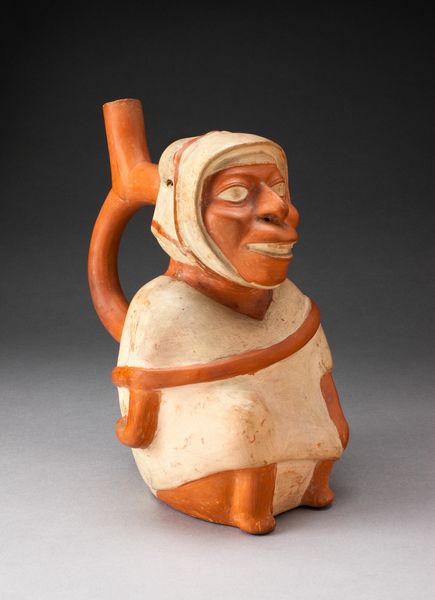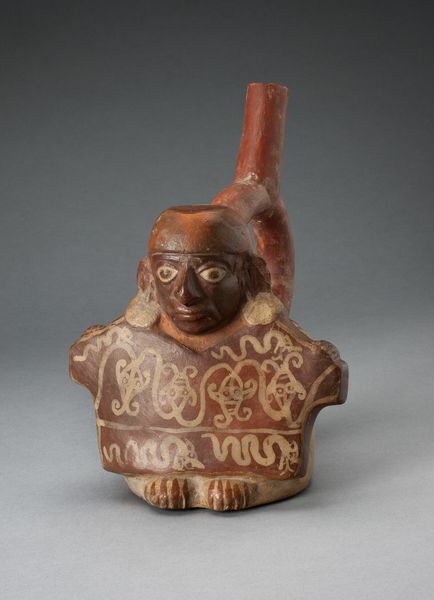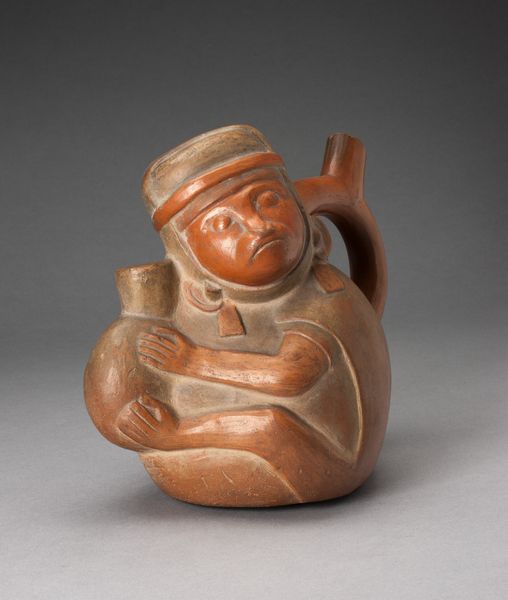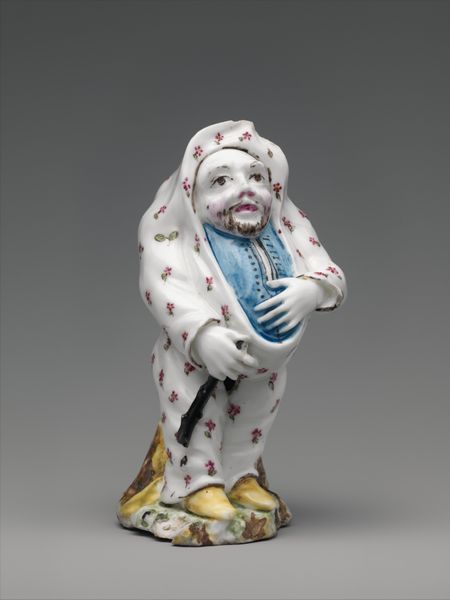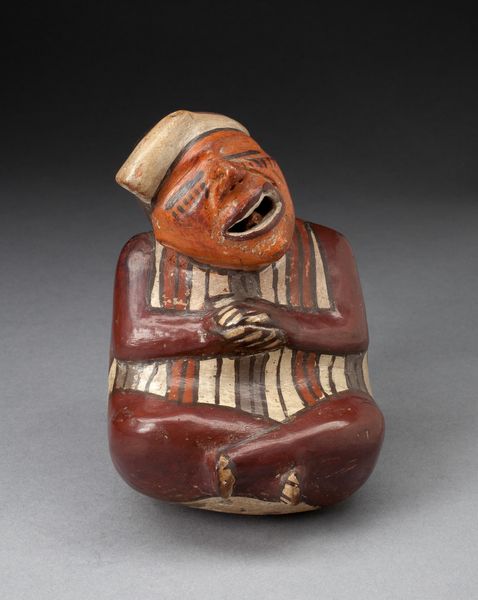
Vessel in the Form of a Seated Ruler with a Pampas Cat Possibly 250 - 550
0:00
0:00
ceramic, sculpture, terracotta
#
portrait
#
ceramic
#
figuration
#
form
#
sculpture
#
ceramic
#
line
#
terracotta
#
indigenous-americas
Dimensions: 19.4 × 19.1 cm (7 5/8 × 7 1/2 in.)
Copyright: Public Domain
Curator: Looking at this ceramic sculpture from the Moche culture, made sometime between 250 and 550 AD, one immediately recognizes a figure of power. It's titled "Vessel in the Form of a Seated Ruler with a Pampas Cat", and the Art Institute of Chicago is fortunate to have this fascinating object. Editor: My first impression? Regal, but also a little austere. There's a certain weightiness to the form, not just in its physical presence but also in the subject's expression. Curator: Indeed. He embodies authority. We must understand the Moche were master potters, as they were keen on craftsmanship. This vessel form speaks volumes. Consider how the labor put into the materials here reflects power dynamics and what this ruler has come to control. Editor: Precisely! The material itself speaks volumes. The act of molding earth, transforming it through fire, speaks of control, literally shaping the world. It moves one to contemplate how indigenous labor extracted and constructed vessels used within sacred rituals. But there’s the interesting duality between the geometric lines along the seat and his robe as compared with the much more tender curves in his face and also that adorable pampas cat, sitting there so patiently on his left. How does the artist incorporate this material while demonstrating war tactics of this man sitting right here. Curator: The pampas cat further supports his authority. In Moche iconography, felines symbolize power, ferocity, and even shamanic abilities. The animal’s presence beside the ruler links him to those qualities, embedding them deeper into Moche social structures and religious beliefs. Editor: What about the vessel shape? Functionality seems almost secondary to representation. The artistry is such that its surface would act more to decorate, thus being further evidence that only a ruling figure would sit next to the sculpture! And there is a long hollow neck from which liquids probably pour that leads to functionality within rituals. This all relates to process, materiality, and consumption. Curator: True, form and function are intertwined, each is carefully made for sacred rituals. The sculpture may have played a part in rites validating the ruler’s power or seeking divine favor. Editor: Mmhmm, this ceramic speaks volumes not just about aesthetics but about indigenous forms of labor. The details make us want to believe the subject may be sitting next to something akin to himself with just as much majesty. We are given space to meditate on the importance of making while living within the Moche society. Curator: Thinking about how that relates to our context and social history. His solemn gaze demands consideration of these systems of representation and the lasting legacy of indigenous American cultures and civilizations. Editor: Precisely. Considering how all of this has transformed into contemporary discourse leaves us both empowered.
Comments
No comments
Be the first to comment and join the conversation on the ultimate creative platform.

